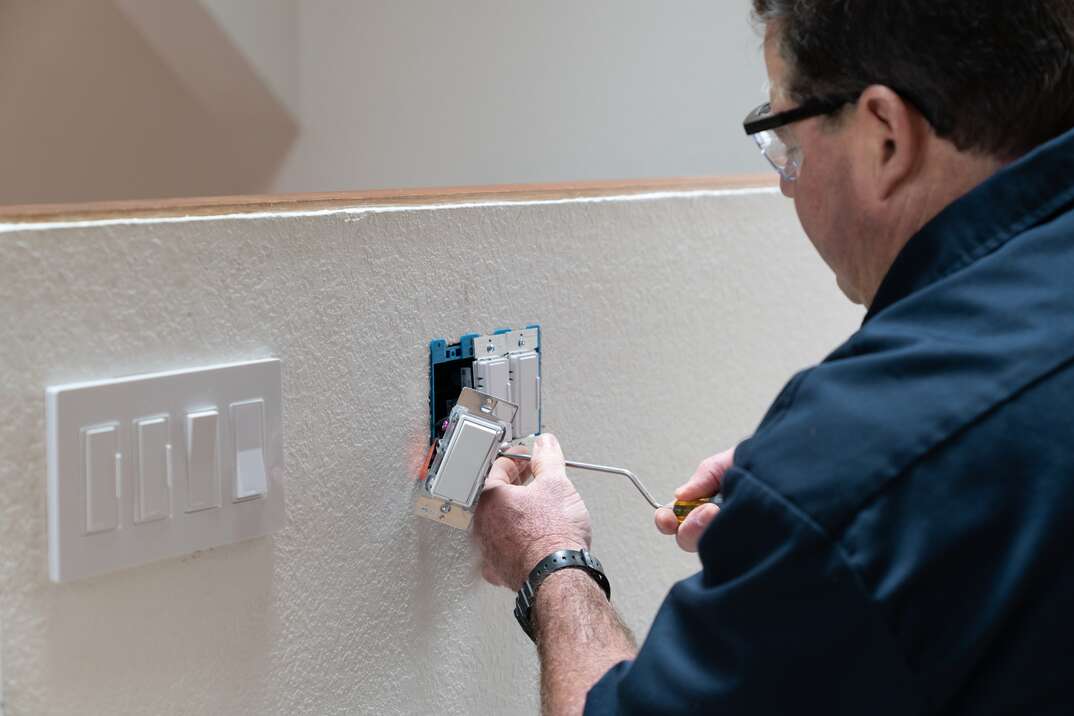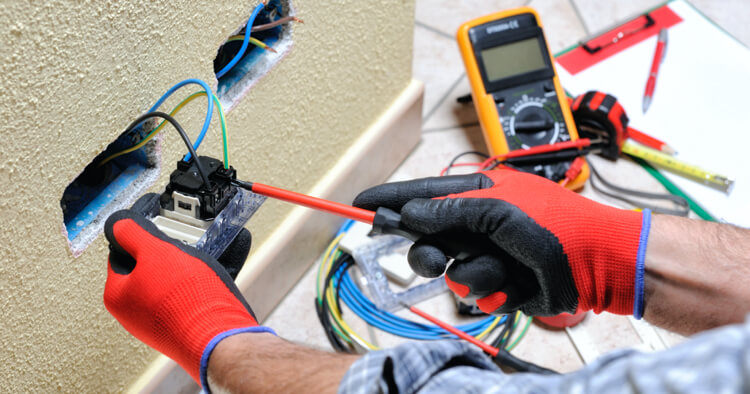How to Install Outdoor Outlet Covers

Installing Outdoor Outlet Covers at a Glance
- Step 1: Remove existing cover
- Step 2: Choose backplate
- Step 3: Screw on housing
- Step 4: Install cover
Outdoor outlets are convenient if you want to plug in power tools, an electric grill or some decorative lighting, but it's important to protect them from the elements. Installing an outdoor outlet cover stops water and debris from getting inside your outlet and is essential for keeping you and your family safe.
Here are the step-by-step installation instructions.
Do Outside Outlets Need to Be Covered?
All outdoor outlets need a cover because they are exposed to the elements. If water, dirt or salty air gets inside an electrical outlet, it could cause serious damage to the electrics. A wet outlet could also cause a significant hazard.
If water gets inside your outlet, you could get an electric shock when you try plugging something into it. Water in your electrical system could also short-circuit the entire house, which is expensive to repair. Rainwater is the most obvious way your outdoor outlets could get wet, but you could also inadvertently spray them when you water your garden with the hose. Therefore, you should install an outlet cover on every outdoor socket, even if they're under an awning or other outdoor shelter.
What Are the Different Types of Exterior Outlet Covers?
There are two main types of outdoor outlet covers: weatherproof covers and outlet box hoods, otherwise known as bubble covers or in-use covers.
Weatherproof outdoor outlet covers have a flap that lifts upwards when you plug an appliance into the outlet. Therefore, they only protect the outlet when it's not in use. They're only suitable for outdoor outlets that are otherwise protected from the elements by a structure like a porch.
Outlet box hoods are fully enclosed and protect the outlet from the elements even when it's being used. The National Electrical Code requires all outdoor outlets to have an outlet box hood if they're in a wet location, and the cover must be marked "extra duty." In other words, any outlets that aren't protected by a shelter need an outlet box hood. The rules were updated in 2014, so it's worth checking that your outlet covers are NEC-compliant if they were installed before 2014.
An electric shock from a wet outlet could be fatal, so it's essential to use an outdoor outlet cover designed for the purpose. Using a homemade outdoor outlet cover is dangerous and won't provide adequate protection from water.
Installing Outlet Covers: Step-by-Step
Installing an outdoor outlet cover is relatively straightforward, but it's important to defer to the manufacturer's instructions to ensure proper protection. If you're unsure, it's safest to hire a professional electrician to install the cover for you. The instructions below explain how to install a bubble-type outdoor outlet cover designed for wet conditions.
Step 1: Remove the Old Cover
If your outlet has an old cover installed, you'll need to remove it first. Open the flaps fully and use a screwdriver to remove the screws fixing it to the wall. You should then be able to pull the cover off.
Step 2: Choose the Correct Backplate
Bubble covers usually come with several backplates to fit different types of outdoor outlets. Find the backplate that suits your outlet shape and follow the instructions in the package to insert it into the housing.
If your cover has a seal, remove the middle section and place the cover against the outlet to check that it doesn't obstruct the plug.
Step 3: Screw on the Housing
Loosen the screws at the top and bottom of the outlet so that you can slide the housing over them with the backplate inside. Check that the housing sits flush to the outlet without covering the holes. Then, tighten the mounting screws to hold the housing firmly in place.
Step 4: Install the Cover
The cover will have a tab in the center, and you'll need to remove it to access the socket. Wiggle the tab gently to pry it loose and avoid damaging the cover. Finally, attach the cover to the housing hinge.

